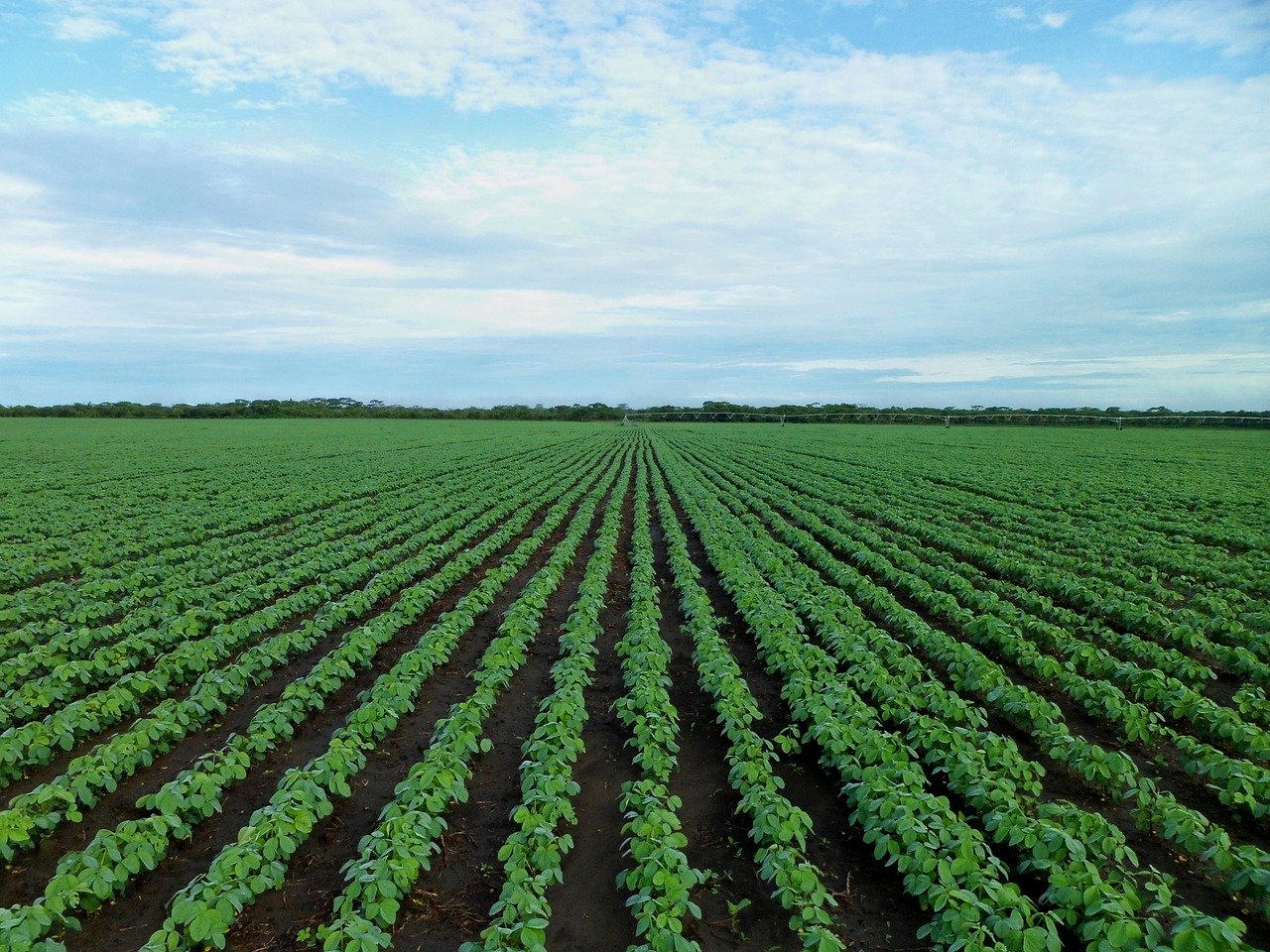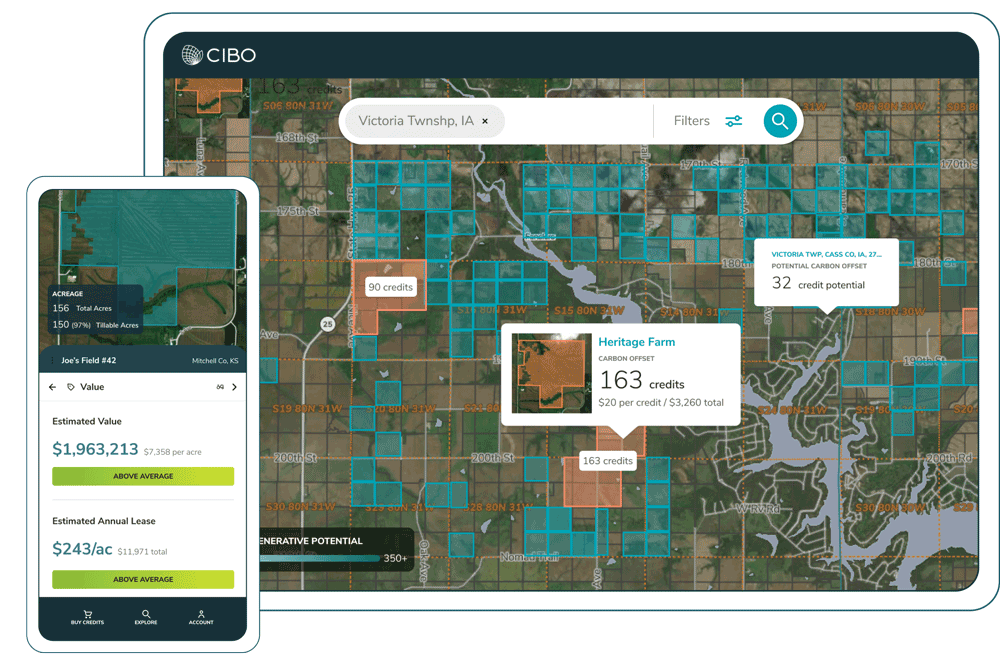Scaling Sustainable Agriculture:
Regenerative Farming and the
Next Generation of Carbon Markets
Download this e-Book
By Jenette Ashtekar, Ph.D.
Awareness of climate change and new opportunities to reduce our carbon footprint has never been greater. And while agriculture has long been under the spotlight as a contributor to climate change and soil depletion, today it has become clear that agriculture is part of the climate solution.
Through broad adoption of farm management practices that replenish the soil and help trap carbon in the ground, meaningful reductions in greenhouse gas emissions and improvements in soil-based carbon sequestration can be achieved. These practices– called sustainable and regenerative agriculture– are known to promote long-term economic and environmental sustainability by increasing soil organic carbon, improving soil health and building farm resilience.
Additionally, these practices have the added benefit of reducing dependence on greenhouse gas intensive fertilizers, and in some cases drawing down and sequestering carbon from the atmosphere. The unique advantage of agriculture is that the same actions which so positively impact the climate and reduce emissions are the same actions that regenerate and replenish the soil.
Sustainable and regenerative agriculture have long been economically and environmentally aligned, but adoption has been slow. While the concepts are broadly understood, it has been difficult for farm owners and operators to easily understand the regenerative potential for their specific parcels of land. Additionally, farmers have historically not been sufficiently incentivized to adopt and maintain regenerative practices. Despite the benefits to soil health, productivity, water retention, and erosion control, only about 25% of farmers in the US commit to regenerative practices for 100% of their land1. More can and should be done to support farmers and incentivize the transition to regenerative practices that benefit the land, our food system, and our shared climate.

Climate change is a challenge that is both immensely global and inherently local. Our individual actions matter and solutions that scale are the only way we can make an impact. For too long, agriculture has been viewed as an environmental bad-guy. This narrow view too often blames farmers for the environmental footprint of a food system that feeds us all, while also failing to recognize the contribution farmers make and the thoughtful stewardship they provide.
The time has come to adopt a modern view of farming and develop solutions that recognize, reward, and support farmers for the good decisions they make to restore and regenerate the land.
It all starts with the ground beneath our feet. Understanding the challenge is important in order to understand the components of the solution and how they can best be implemented.
Regenerative Agriculture is part of the solution farmers are adopting to address sustainable farm management and promote long term productivity and profitability.
With it, farmers improve soil health, reduce Greenhouse gas (GHG) emissions and remove carbon dioxide (CO2) from the atmosphere. Farming practices like conservation tillage (e.g. low-till, no-till, strip till) cover cropping, erosion prevention, and precision fertilization all contribute to reducing and offsetting carbon while also restoring soil health and farm resiliency.
Though regenerative agriculture is considered a win-win for both farmers and the environment, broad adoption of these practices has yet to be achieved. This lack of scale can be explained by the cost and risk taken on by farmers when they choose to adopt new regenerative practices. Cover cropping can be expensive and may cost as much as $50/acre per year to purchase seeds and implement the practice.
Real ROI and returns on regenerative farming take time. More than one season is required to grow soil health and increase profitability. This means that farmers bear the up-front costs of these practices, sometimes for years, before realizing the benefits in increased productivity and yield and reduced input costs. As clear as the long-term benefits are, the short and medium term costs are non-trivial and the business of farming is one where a single year can define a boom or a bust. Farmers deserve a clear assessment of their expected benefits and immediate incentives based on their real, seasonal management decisions.
Under regenerative management US row crop land can sequester 350 M tonnes of CO2e a year for an estimated market value of more than $5 billion. The carbon sequestration and GHG mitigation capabilities of regeneratively managed farmland has not gone unnoticed. Corporations and individuals are beginning to recognize and act on the carbon sequestration potential of farmland and the win-win opportunity offered by regenerative practices.
CPG companies with strong ties to growers– like General Mills and Danone– are actively promoting the adoption of these practices within their supply chains, and technology companies– including Microsoft, Apple, Amazon and Shopify– are making good on their carbon neutral commitments by purchasing carbon credits derived from farmer’s regenerative practices.
These soil-carbon credits, and the voluntary markets materializing around them, present an exciting opportunity to incentivize farmers to adopt new sustainable and regenerative management practices.
Though the opportunity to monetize on- farm soil-carbon sequestration and GHG avoidance is large, modernization and streamlining of the current system is needed to scale grower adoption.
The time has come for a new, direct, carbon marketplace that focuses on farmers and creates economically and environmentally sustainable ROI for them.
This is exactly what CIBO has done with CIBO Impact™.

Agriculture functions on a seasonal and annual cycle that requires owners and operators make decisions every year on what to grow, how to grow and what inputs to use (e.g. fertilizers, chemical applications, pesticides etc.). This is obvious and intuitive when thinking about farming operations. However, the implication on carbon credits has not been explored previously.
Unlike carbon sequestration from refineries or smoke stack scrubbers, agricultural carbon exists in a bio-dynamic environment directly affected by the farming management decisions farmers make every season. The simple summary is that richer, replenished soil is able to store more carbon for longer than tilled and exposed soils. Regenerative practices enrich the soil, help prevent erosion and create environments where carbon can be effectively trapped for longer periods of time6. Because of this, CIBO Carbon Credits are calculated on an annual basis for practices that are implemented over the course of a single growing season– beginning with the planting of a cover crop in the fall and ending with the harvesting of a primary cash crop the following fall.
The annual approach to carbon offset calculation is the only approach that makes sense in a bio-dynamic environment like farming. Several factors about the business of farming contribute to the necessity of this seasonal approach. Farmers have to decide each season:
Some Options Include:
Most crop farmers lease at least some of the land they farm. The overwhelming majority of leases are renewed every year, meaning that there is a decision each and every year by both the owner and the operator to continue or move on7. The prevalence of leasing land and short-term lease durations mean that the long-term benefits of soil regeneration and the subsequent benefits for productivity accrue primarily to the land owner and less so to the leasing farmer. This imbalance is exacerbated in the early and initial years of the regenerative transition when the operator may be expected to adopt more expensive and labor intensive practices that will not necessarily produce a positive commercial / yield impact for several years.
Yet, the farmer can make decisions every season that can either advance or unwind the regenerative, greenhouse gas emissions and carbon sequestration progress made in the prior season. It is vital, then, that any agricultural based solution for greenhouse gas emissions and carbon sequestration acknowledge and incentivize the annual decisions of farmers.

Return to the pathway to build your knowledge of regenerative agriculture
Return to Pathway